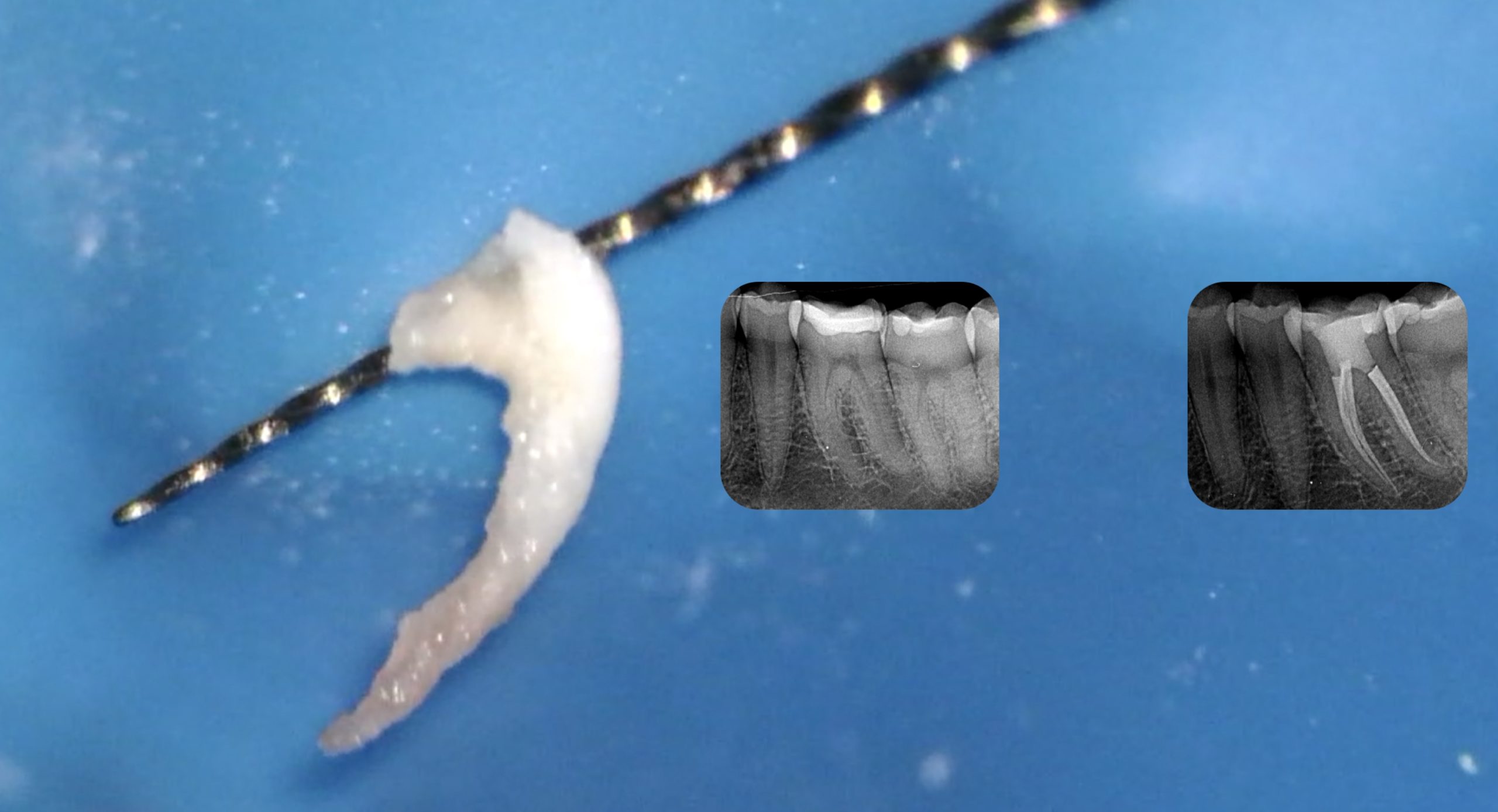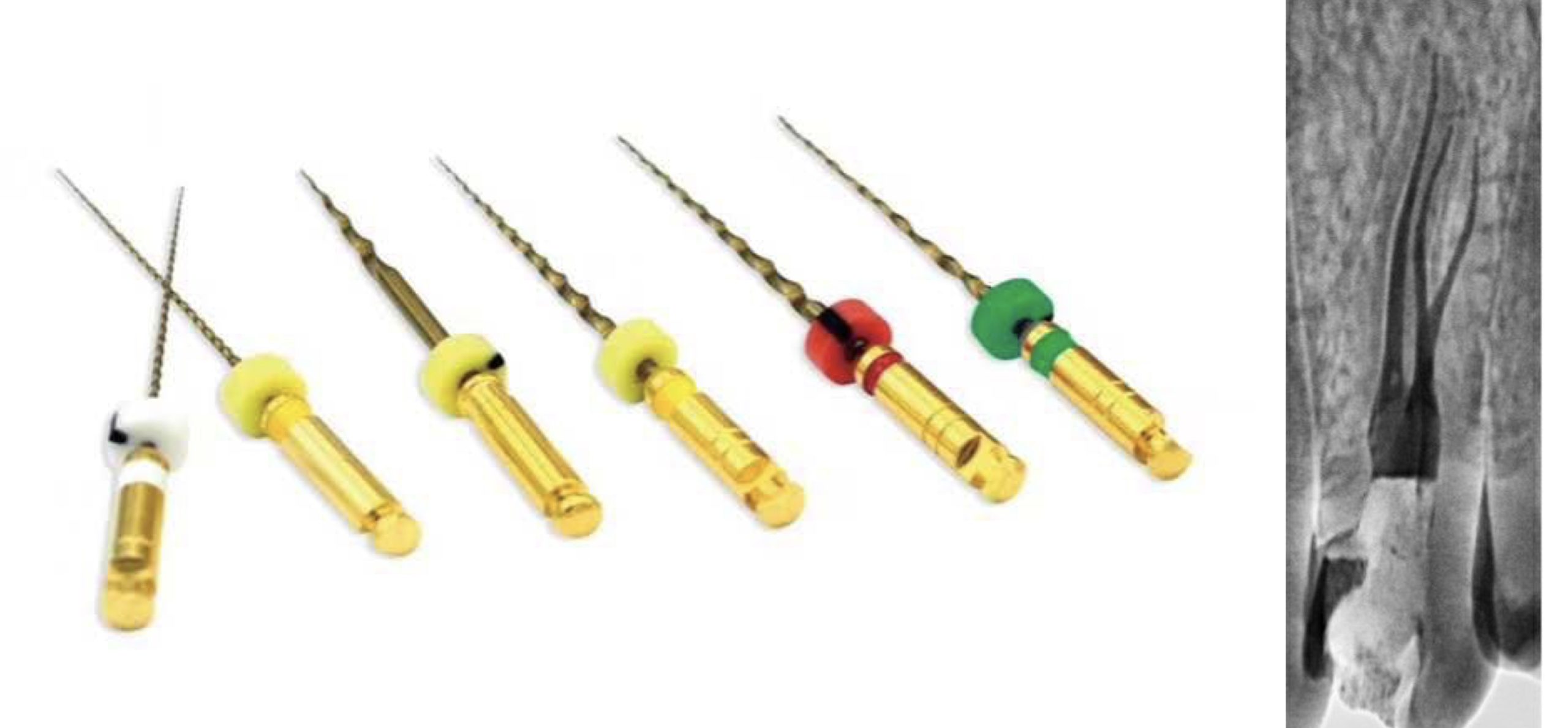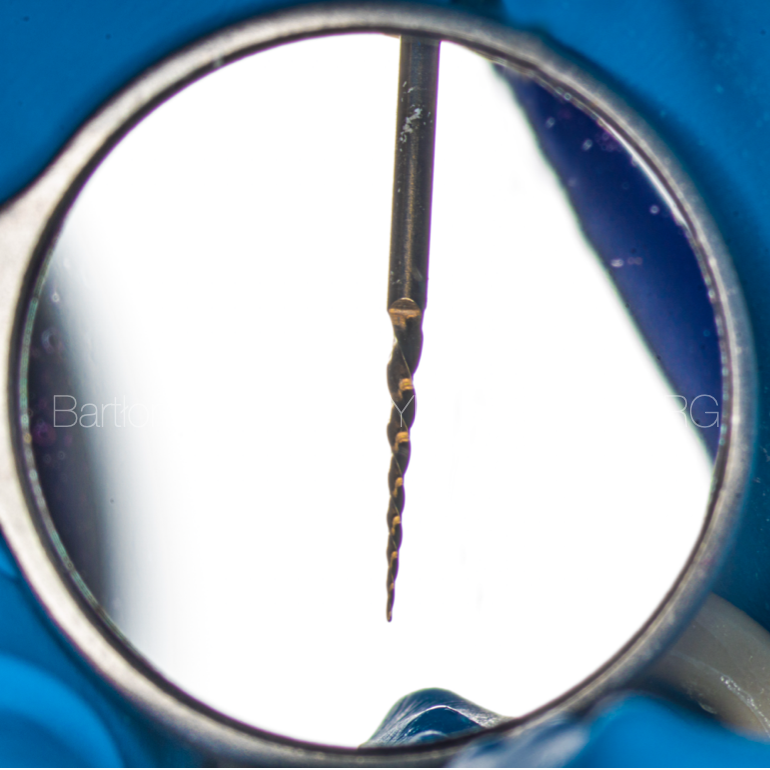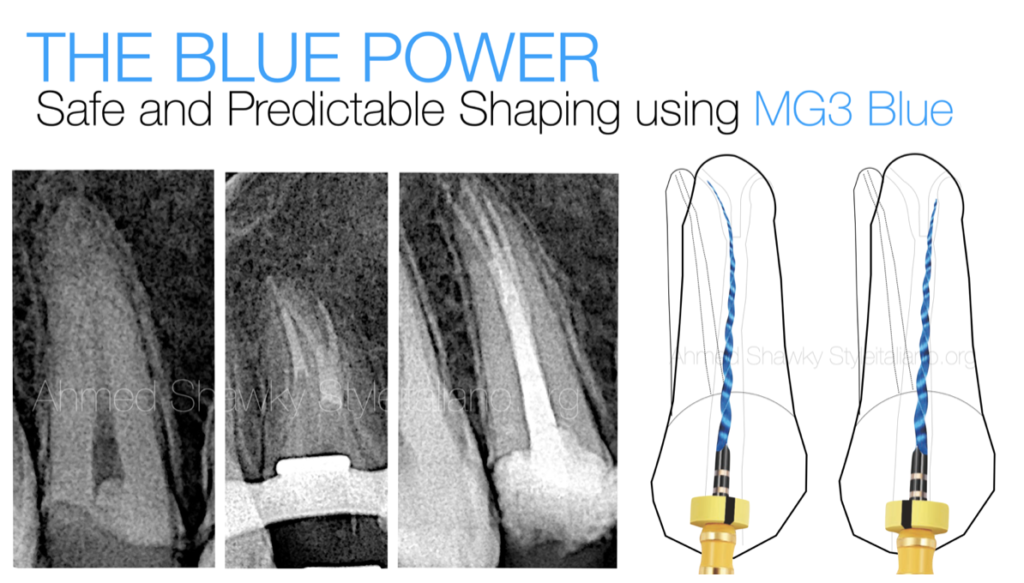
The Blue Power: Safe and Predictable Shaping using MG3 Blue
24/01/2022
Ahmed Shawky
Warning: Undefined variable $post in /var/www/vhosts/styleitaliano-endodontics.org/endodontics.styleitaliano.org/wp-content/plugins/oxygen/component-framework/components/classes/code-block.class.php(133) : eval()'d code on line 2
Warning: Attempt to read property "ID" on null in /var/www/vhosts/styleitaliano-endodontics.org/endodontics.styleitaliano.org/wp-content/plugins/oxygen/component-framework/components/classes/code-block.class.php(133) : eval()'d code on line 2
Following the access preparation and location of anatomy, the next challenge facing the endodontic clinician is to select the proper alloy and sequence for the shaping procedures in order to be able to safely and predictably shape the anatomy without any procedural errors.
This article will show the advantages of the MG3 Blue instruments and how can we customize the sequence of these files according the encountered anatomy and case difficulty for safe and predictable treatment.
First we will go through the components of the basic kit of the MG3 Blue file system.
The SV file (Orifice modifier/Opener):
It is a 20/.10 file which is used for mechanical pre-flaring for reducing the coronal interferences. Thanks to the heat treatment, this opener file is having controlled memory effect despide its large taper.
It has an overall length of 19 mm, which –together with the prebending ability- allows using this instrument in restricted areas of the oral cavity.
The working Part of the SV file is 9mm to allow controlled mechanical Preflaring not beyond the coronal third of the canal
The cross-section of this file is Convex triangular, which gives the file great strength while having high cutting efficiency
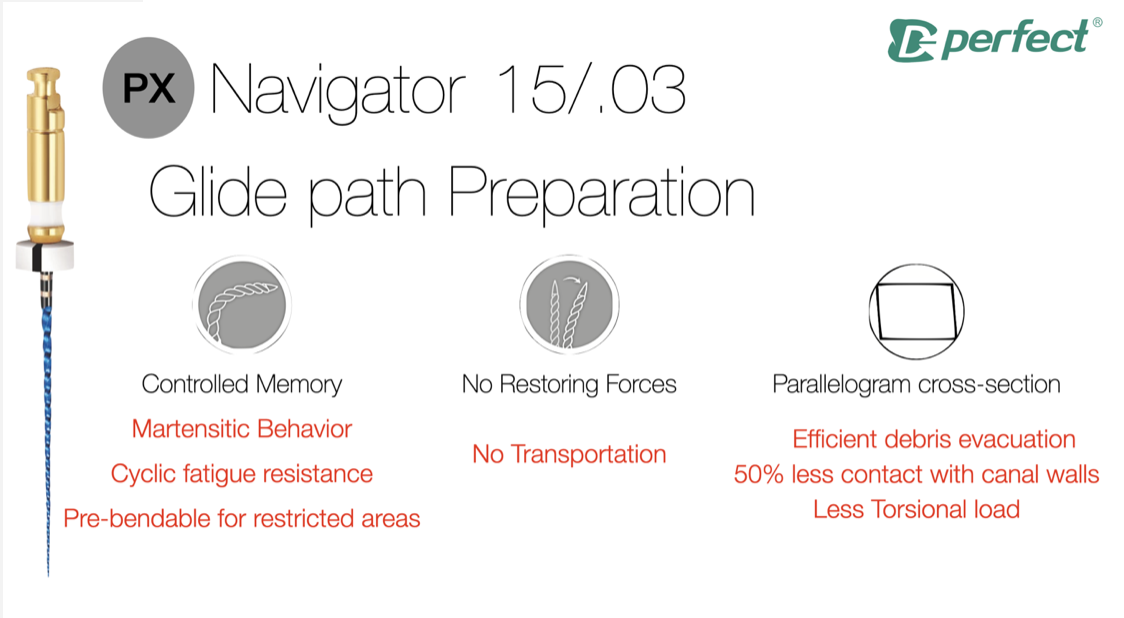
Fig. 1
PX Navigator file:
This file is used for glide path preparation. It is 15/.03 file with martensitic behavior. This makes the file having high cyclic fatigue resistance and long TTF (time to fracture).
It has a controlled memory effect making the file following the curvatures of the root canal without any restoring forces, thus avoiding transportations.
The cross section of this file is “Parallelogram”, having 50% less contact with the dentinal wall of the root canal walls, thus reducing the torsional load on the file.
The debris space is quite large, which-together with the variable pitch- allows coronal evacuation of debris
G1 File:
The G1 file is a shaping file having 20 tip size and 4% taper.
This file is very benificial in shaping complex anatomies such as, deep splits where the controlled memory properties as well as the small tip size allows it to be directed precisely into the desired location after prebending.
Once the file is inroduced into the anatomy, it doesn’t rebound maintaining the original shape of the canal without overcutting on the danger zones (areas of minimal dentin thickness).
The cross section of the file is triangular which has the advantages of reduced metal core (enhancing the flexibility in curved canals) as well as high cutting efficiency.
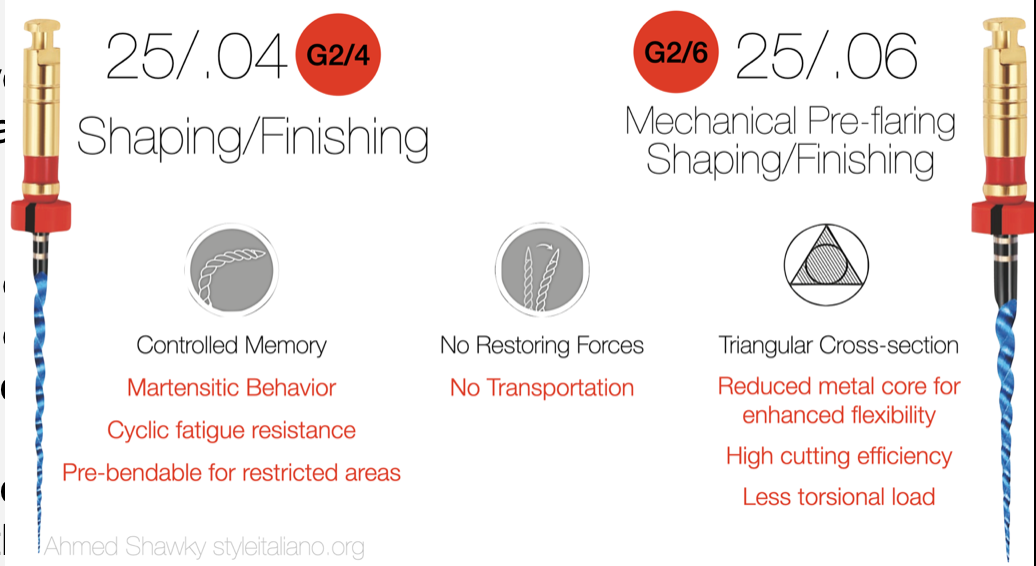
Fig. 2
The G2 files:
The G2 files are having 25 tip size and are present in two tapers (4% and 6%)
The presence of two tapers allows progressive and gradual preparation of the root canal whenever needed.
The cross section of the G2 files is triangular.
Owing to the metallurgy and cross-section of the MG3 Blue, the 25/.06 G2 file is having unique flexibility and cyclic fatigue resistance compared to other files having the same size and taper.
The G2 4% file can be used in body shaping and can be used as a finishing file in cases with anatomical limitations such as severely curved canals.
The G2 6% file can be used for pressurless preflaring as well as a shaping/finishing file.
Other MG3 Blue design features: [Video]
The MG3 Blue files are machined with variable pitch and helix, allowing:
- Efficient coronal evacuation of debris
- Absence of screw-in tendency
This would also reduce the torsional load on the instrument that would otherwise occur due to debris accumulation or excessive friction with the root canal walls.
In this video an MG3 Blue file is used to negotiate a missed MB2 orifice in a retreatment case and we appreciate the efficient debris evacuation with smooth operation using pressure-less pre-flaring
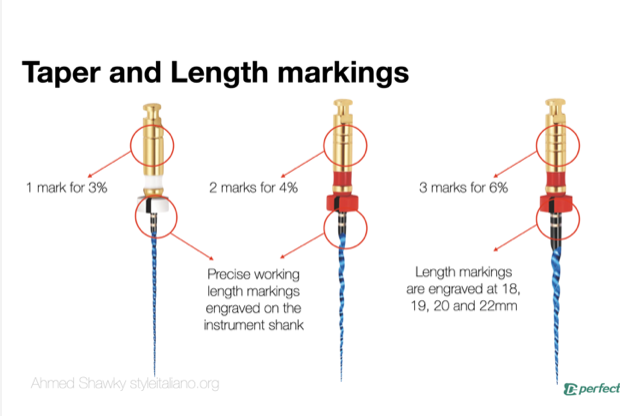
Fig. 3
Additional Information:
- The recommended operation speed: 300-350 rpm
- The recommended torque: 2 (PX, G1,G2) -3 N/cm (SV)
- Sizes beyond 25/.06 are available (30/.04, 35/.04)
- Taper markings are present (1 mark for 3%, 2 marks for 4% and 3 marks for 6%)
- Precisely calibrated working length markings are engraved on the each instrument shank at 18, 19, 20 and 22 mm for easy reproduction of the recorded working lengths in each canal, especially in multi—rooted teeth having different lengths
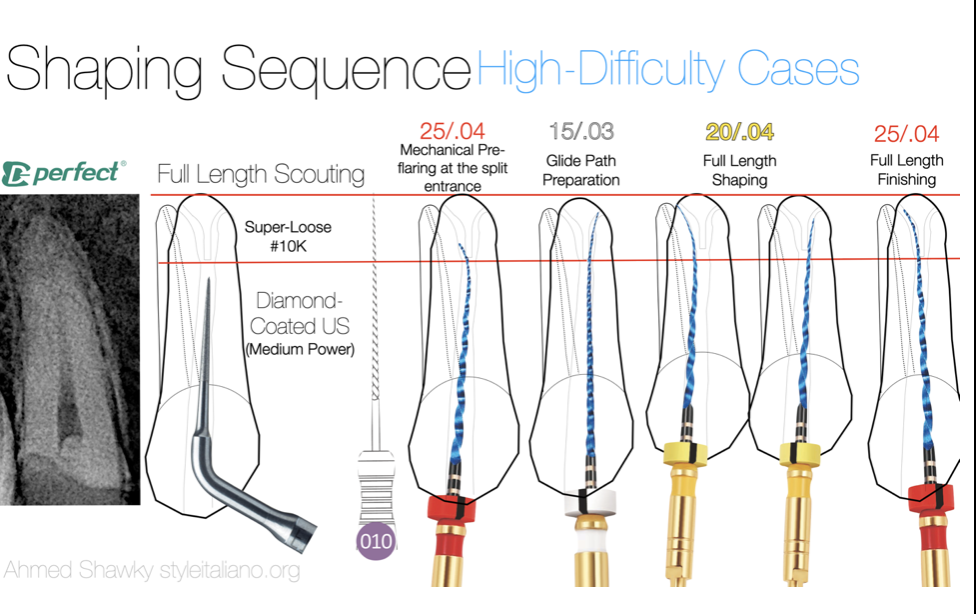
Fig. 4
Now let's see how the clinician can modify the shaping sequence of MG3 Blue in cases with different levels of difficulty
Case1: High Difficulty case – 3 rooted maxillary premolar:
After radiographic and clinical identification of this challenging anatomy, the first challenge was to preflare the trunk above the deep split in the buccal root. This was done using diamond-coated ultrasonics operated at a medium power with intermittent coolant. This step will provide a convenient radicular access to scout and negotiate the splitting system.
A precurved #10 K file was used to negotiate the split until super loose. In a similar way MG3 Blue G2 4% was used to engage the orifice of each canal and with brushing action, it was used to preflare the initial few millimeters of the split ensuring reducing interferences at the split entrance . After irrigation, the PX navigator file (15/.03) was used to create a smooth glide path to the full workig length.
Finall, full length shaping was performed using G1 File (20/.04) and G2 File (25/.04). The patal canal was just prepared with one file (35/.04)
In this way the clinician can use just 2 shaping files in the MG3 Blue system, with smaller tapers to manage a difficult case without inducing any procedural errors
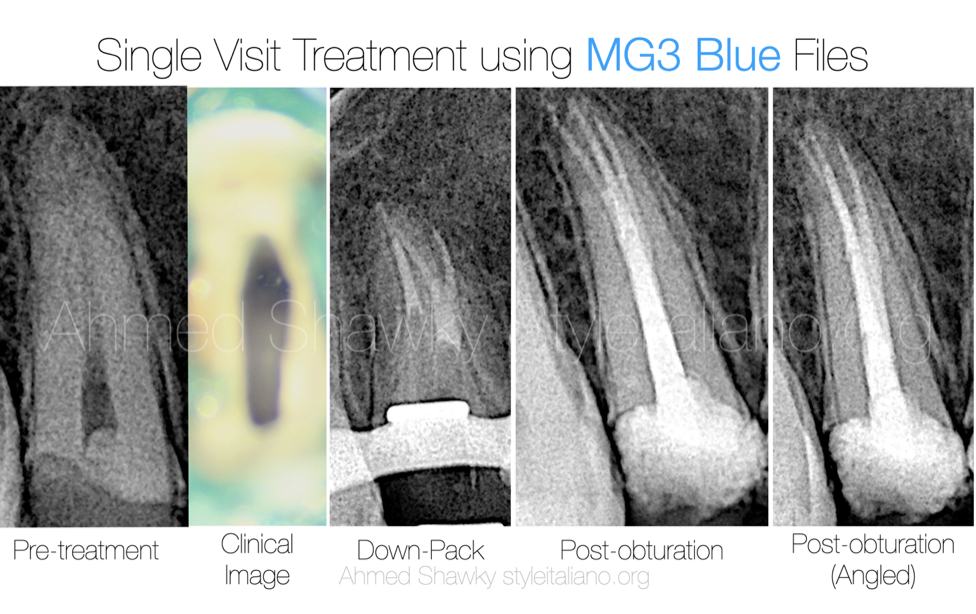
Fig. 5
The case was performed in a single session.
Following finishing the shaping procedures, gauging of the foramina, revealed a standardized preparation exactly as the respective shaping sizes
Obturation procedures were performed using warm vertical compaction and heat compatible bioceramic sealer.
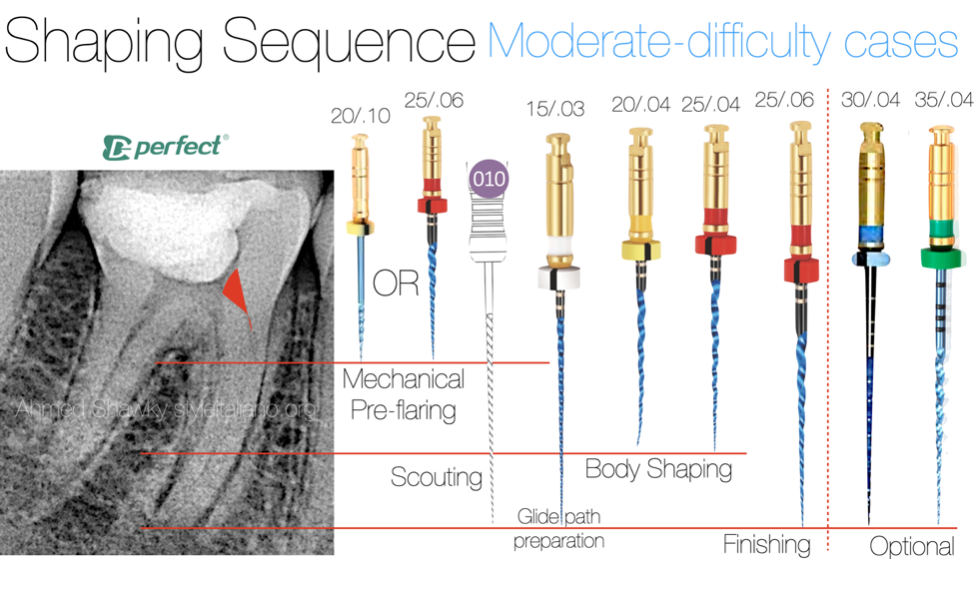
Fig. 6
Case 2: Moderate-Difficulty case – A mandibular molar with calcified coronal portion:
A mandibular molar diagnosed with irreversible pulpitis and symptomatic apical periodontitis, was referred to my practice after initiating access cavity preparation. The tooth was referred due to the inability of the colleague to negotiate the canals due to calcifications.
Using ultrasonic and high magnification, the canal entrances were negotiated using medium power ultrasonics and D-perfect C-Files.
A special concern was given to the coronal portion of the root canal. Pressure-less Mechanical pre-flaring was done to reduce the coronal interferences (cervical dentin triangle-red triangle), which can impose huge stresses on the shaping files leading to a lot of procedural errors such as instrument separation, transportation, thereby increasing the difficulty of an initially straight-forward case.
Mechanical pre-flaring in such a case can be either done using the SV orifice modifier file (20/.10) or using the apical 3 mm of the G2/6 shaping file (25/.06) or even both. The mode of action of these files is brushing motion towards the outer walls.
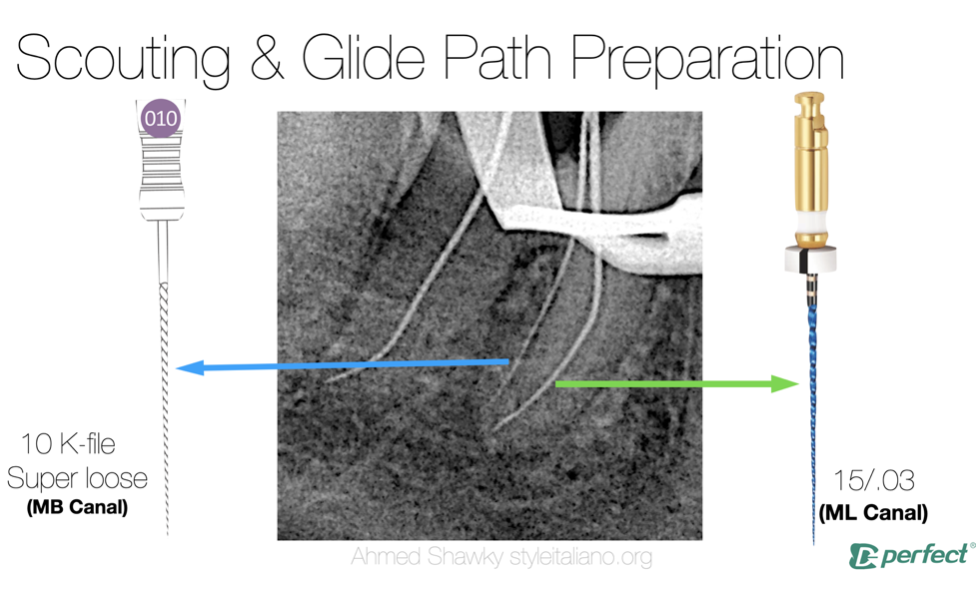
Fig. 7
The root canals were then scouted using #10 k files until super-loose at the full length, which made the canals ready to receive the navigator file (15/.03)
Body shaping was done to 2/3 the working length using 20/.04 and 25/.04 (fixing the taper and increasing the size).
The mesial root canals were finished with 25/.06 and 30/.04, while the distal root canal was finished at 35/.04

Fig. 8
Also this case was performed in a single session.
Obturation was performed using warm vertical compaction of gutta percha and heat-compatible Bioceramic sealer.
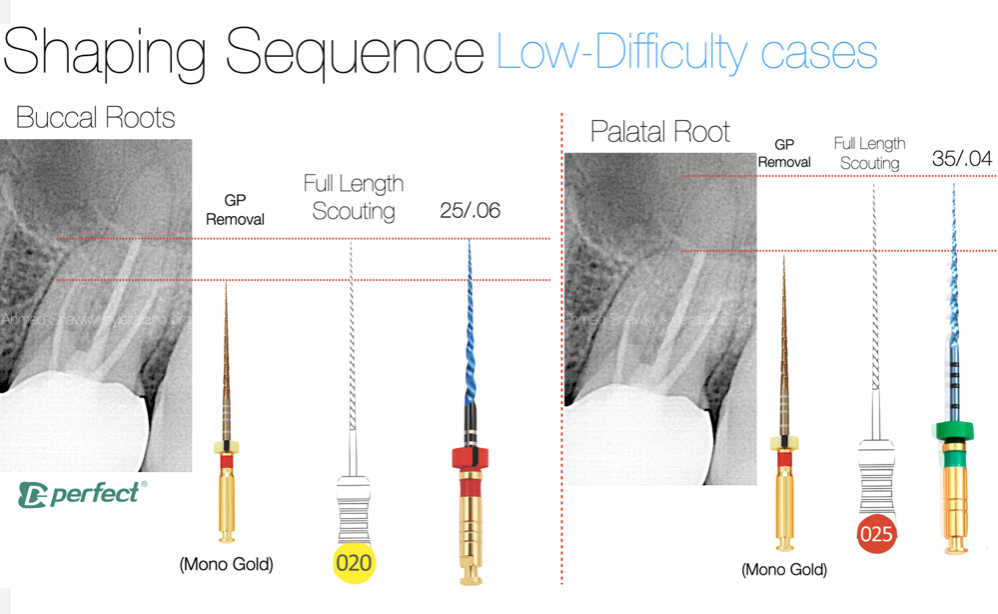
Fig. 9
Case 3: Low Difficulty case – A previously treated maxillary first molar with inadequate root fill:
A previously treated maxillary first molar diagnosed with persistent apical periodontitis. Disassembly of the crown was performed via sectioning and leverage.
Gutta percha removal was performed mechanically using MONO file from D-perfect, till 2/3 of the root canals, where the old gutta percha ends.
Restablishment of the working length was performed using hand K-Files. The canals were considerably easy due to previous treatment, therefore, the buccal canals were only shaped using only one file (25/.06) and the palatal canal with 35/.04. Both files were used in reciprocation motion (interrupted rotation) at the recommended rotation speed with angles 150CW/30CCW
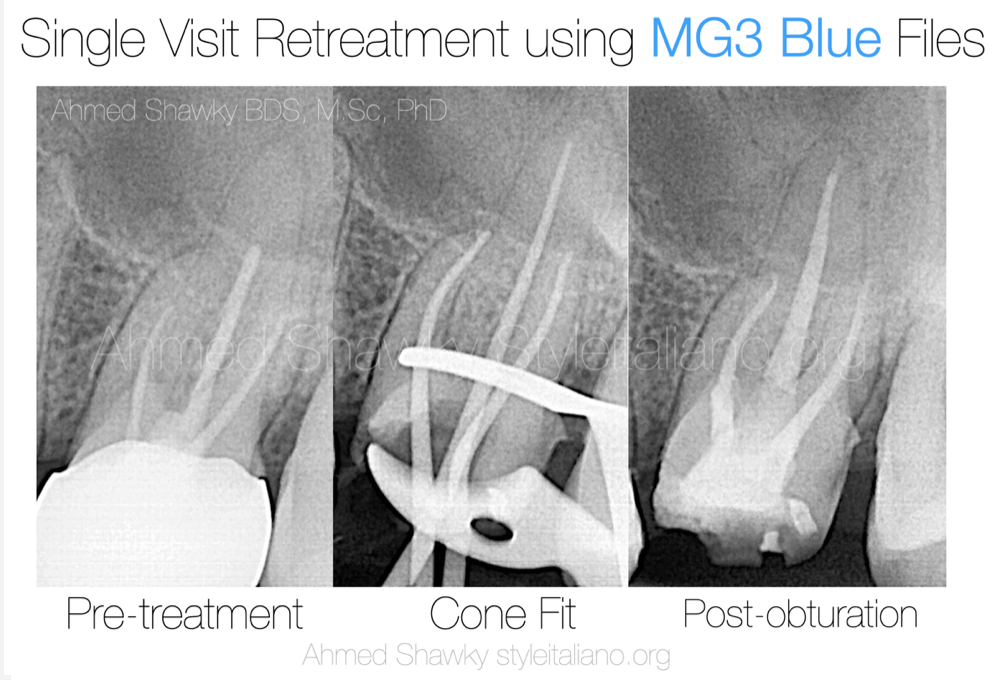
Fig. 10
Obturation was performed using warm vertical compaction of gutta percha and heat-compatible Bioceramic sealer
Conclusions
When dealing with Anatomy, variability is the rule. This is the reason that the endodontic practitioner must be able to modify the sequence of the instruments and treatment approach according to anatomy
The introduction of New files like MG3 Blue with controlled memory behavior and enhanced fracture resistance allows the clinician to manage different cases with an excellent margin of safety and predictability
Bibliography
Schilder H. Cleaning and shaping the root canal. Dent Clin North Am. 1974; 18: 269-296
Schilder H. Filling root canals in three dimensions. Dent Clin North Am. 1967; : 723-744
Swati Srivastava, Current Strategies in Metallurgical Advances of Rotary NiTi Instruments: A Review J Dent Health Oral Disord Ther 2018, 9(1): 00333
Gao Y, Gutmann JL, Wilkinson K, Maxwell R, Ammon D (2012) Evaluation of the impact of raw materials on the fatigue and mechanical properties of ProFile Vortex rotary instruments 10.1016/j.joen.2011.11.004
Shen Y, Qian W, Abtin H, Gao Y, Haapasalo M (2011) Fatigue testing of controlled memory wire nickel-titanium rotary instruments J Endod 2011 Jul;37(7):997-1001. doi: 10.1016/j.joen.2011.03.023.
Shen Y, Qian W, Abtin H, Gao Y, Haapasalo M (2012) Effect of Environment on Fatigue Failure of Controlled Memory Wire Nickel-Titanium Rotary Instruments https://doi.org/10.1016/j.joen.2011.12.002
Shen Y, Zhou HM, Zheng YF, Peng B, Haapasalo M. Current challenges and concepts of the thermomechanical treatment of nickel-titanium instruments. J Endod. 2013 Feb;39(2):163-72. doi: 10.1016/j.joen.2012.11.005. PMID: 23321225.
Peters OA, Gluskin AK, Weiss RA, Han JT. An in vitro assessment of the physical properties of novel Hyflex nickel-titanium rotary instruments. Int Endod J. 2012 Nov;45(11):1027-34. doi: 10.1111/j.1365-2591.2012.02067.x. Epub 2012 May 8. PMID: 22563821.
Bartłomiej Karaś Hybrid shaping concept with MG3 rotary system. https://endodontics.styleitaliano.org/hybrid-shaping-concept-with-mg3-rotary-system/


